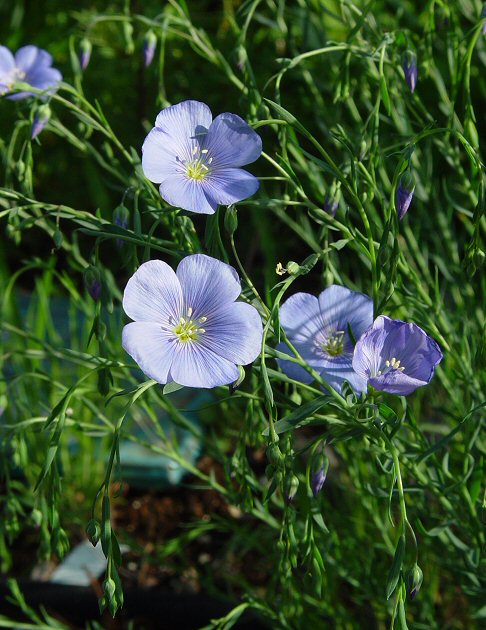Linum usitatissimum L.
Common Flax

Introduced
CC = *
CW = 5
MOC = 20
© DETenaglia
Linum usitatissimum L.Common Flax | |
 |
Introduced CC = * CW = 5 MOC = 20 |
© DETenaglia |
|
Family - Linaceae Stems - To .75m tall, herbaceous, glabrous, reclining to erect, multiple from base, branching above.
Leaves - Alternate, linear, entire, glabrous, glaucous, sessile, to 3cm long, 3mm broad. Inflorescence - Loose panicles terminating stems. Flowers - Corolla blue-purple, rotate. Petals 5, to 2cm long, free, cuneate, glabrous, yellowish at base. Stamens 5. Filaments to -4mm long, connected and forming ring around ovary at base, white and fading into light blue-purple at apex. Anthers pale yellow, to 2mm long. Styles 5, to 5mm long, purplish. Ovary globose to subcylindric, glabrous, 10-carpellate.
Fruit - Ovoid capsule to -1cm long, splitting (dehiscing) into 10 portions. Flowering - May - September. Habitat - Waste ground, disturbed sites, roadsides, railroads. Also cultivated. Origin - Native to Europe. Other info. - This plant is the common cultivated "Flax" which is used to make linen and linseed oil (a classic wood finish for carpenters). The plant is very high in fatty acid content, especially the unsaturated - linolenic acid. It can be found cultivated throughout the state and is rarely escaped. Photographs taken in Columbia, MO., 4-25-04. |